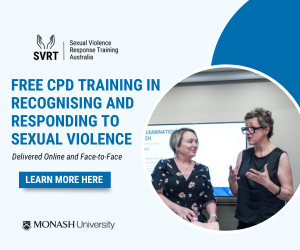All roads to financial health start with a budget – but when your work shifts your income can vary week to week, making it harder to work out the numbers. Here are five things you can do now to take control of your spending and save for the goals that matter to you.
Step 1. Get a clear picture of your finances
Before you set up your budget, it’s important to first understand how much you’re spending so you can find areas where you can save.
Action
- Record everything you earn and spend for a month. Go through your bank and credit card statements so you don’t miss anything.
- Include occasional expenses such as haircuts.
- Break down the bills you pay each year or quarter into monthly costs. For example, if you pay $1,440 for your car insurance once a year, then that’s $120 a month.
- List your debts, including your HECS.
- Be honest and accurate. There’s no need to feel embarrassed – this is just for you.
Step 2. Put a spending plan in place
Set up your budget – that’s your plan for how you’ll spend and save money.
To make budgeting easy, Health Professionals Bank provides a free online budgeting tool.
But if you’d prefer, you can use a spreadsheet or pen and paper. The ‘right’ method is simply the one that works best for you – as it means you’re more likely to stick to it.
Action
- Put what you spend into categories: the essentials (rent, food, etc.) versus wants (takeaway meals, going out).
- Plan to spend some money on fun as it’s not realistic to include only the essentials.
- Review your spending to find ways to cut back. What you spend on ‘wants’ is a great place to start.
- If you’re spending more than you earn, it’s likely you’re using credit to cover the gap. It’s important to get your budget back in balance – and even find some money to save.
Step 3. Watch out for spending leaks
Like drips from a leaky tap, spending leaks are those small, regular expenses that add up and make a big dent in your budget over time.
Action
- Add up spending leaks over a year. It’ll help you to decide if the spending is really worth it. For example, buying a $5 takeaway coffee every day adds up to a massive $1,825 over a year.
- Gym memberships and entertainment subscriptions can add up to a lot over time. Could you walk or do an at-home or park workout instead of paying for a gym or Pilates membership? Could you use free streaming services from your local library, SBS On Demand or ABC iview instead of video-on-demand subscriptions?
- Avoid late payment fees by scheduling payments from your bank account. Some energy retailers offer pay-on-time discounts on power bills.
- If your money seems to vanish, using cash can help you be more aware of how much you’re spending. A debit card can also help you to stay within your budget.
Step 4. Work out how much you can save
When you have a budget, it’s easy to work out how much you can save or use to pay off debt.
Action
- Pay off loans with the highest fees and interest rates first, such as Buy Now Pay Later debt and credit card debt.
- Include the amount you want to save in your budget as an expense – that way you’ll put a fixed amount away first instead of just saving whatever is left at the end of month.
- Have an emergency fund as well as savings for a long-term goal such as a home deposit. It’s good to have a buffer for unexpected emergencies such as car repairs.
Step 5. Track and celebrate your progress
Set a date each month to check how your spending is matching your income and track your progress towards your savings goals.
Action
- Use a mobile banking app to track your spending. In the Health Professionals Bank Mobile Banking App you can turn on ‘How I Spend’ via ‘My Settings’.
- Link your accounts to your savings goals and track your progress.
- Use payment reminders and alerts to avoid late payment fees and take advantage of pay-on-time discounts.
- Adjust your budget as your circumstances change, such as a pay rise or an increase in your expenses.
- Celebrate your successes to stay motivated.
The good news is there are plenty of free tools that make budgeting easier than you think. Get started today and you’ll get on top of your finances and be on track to reach your goals sooner.
Health Professionals Bank | Bank differentlyFind out more about how you can boost your financial wellbeing today. |
This information is general in nature and does not take your personal objectives, financial circumstances or needs into account. Consider its appropriateness to these factors before acting on it. Before you decide on any of our products or services, please read both the Conditions of Use Accounts and Access and Fees and charges documents. You can find these online or ask at any of our offices. Membership is open to citizens or permanent residents of Australia who are current or retired employees in the Australian health sector or are family members of members (i.e. shareholders) of the Bank. Health Professionals Bank is a division of Teachers Mutual Bank Limited ABN 30 087 650 459 AFSL/Australian Credit Licence 238981.










